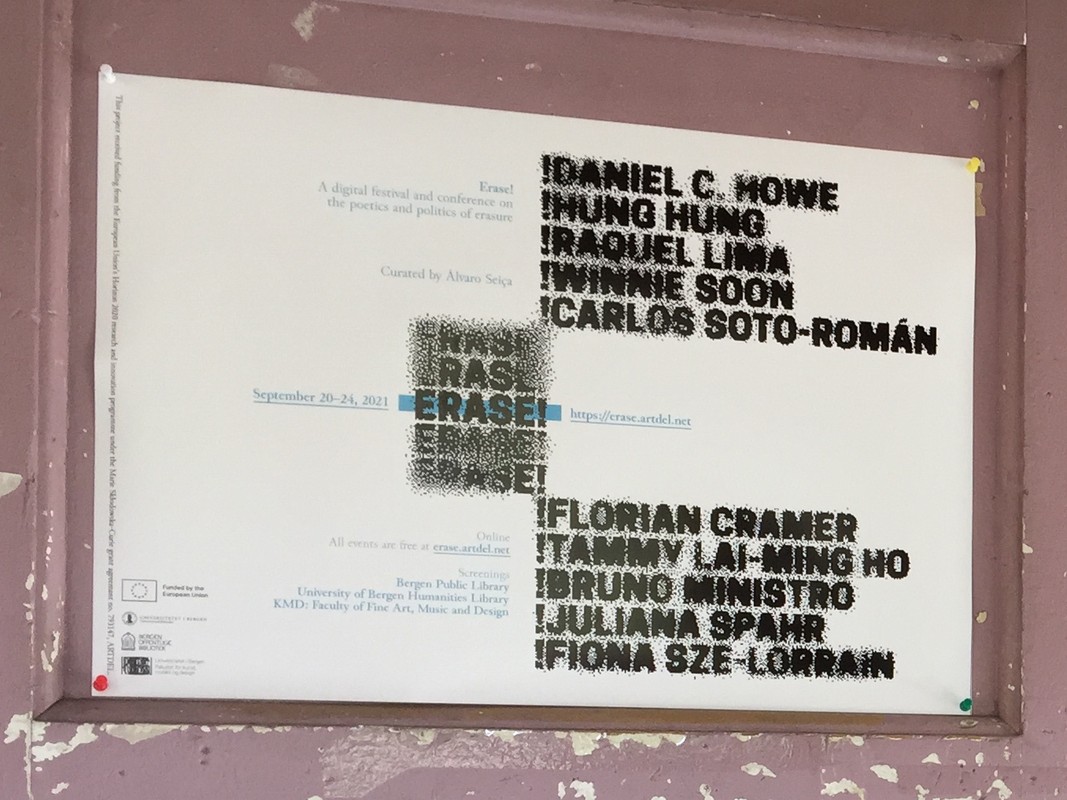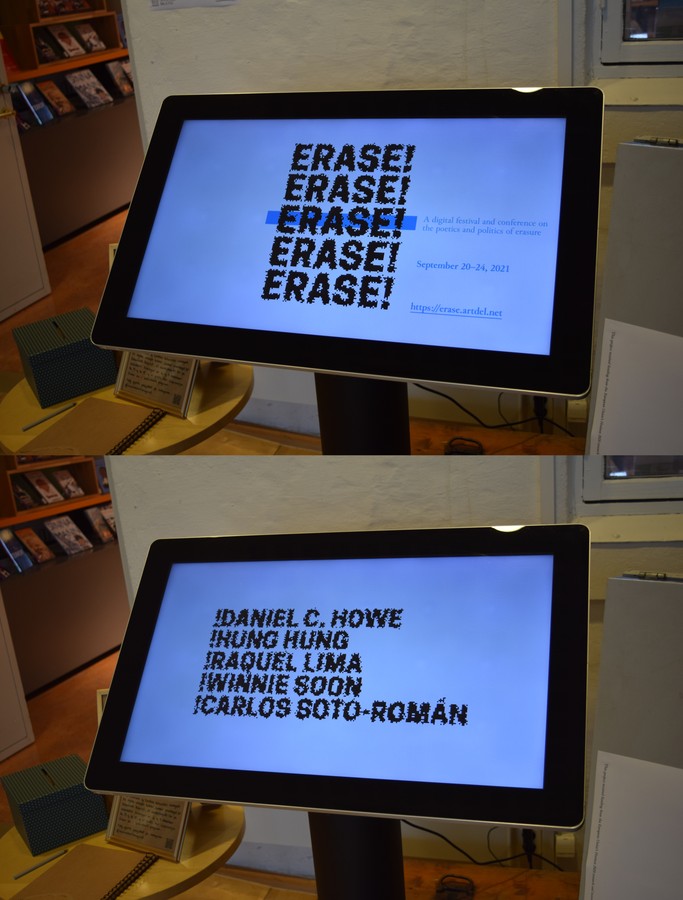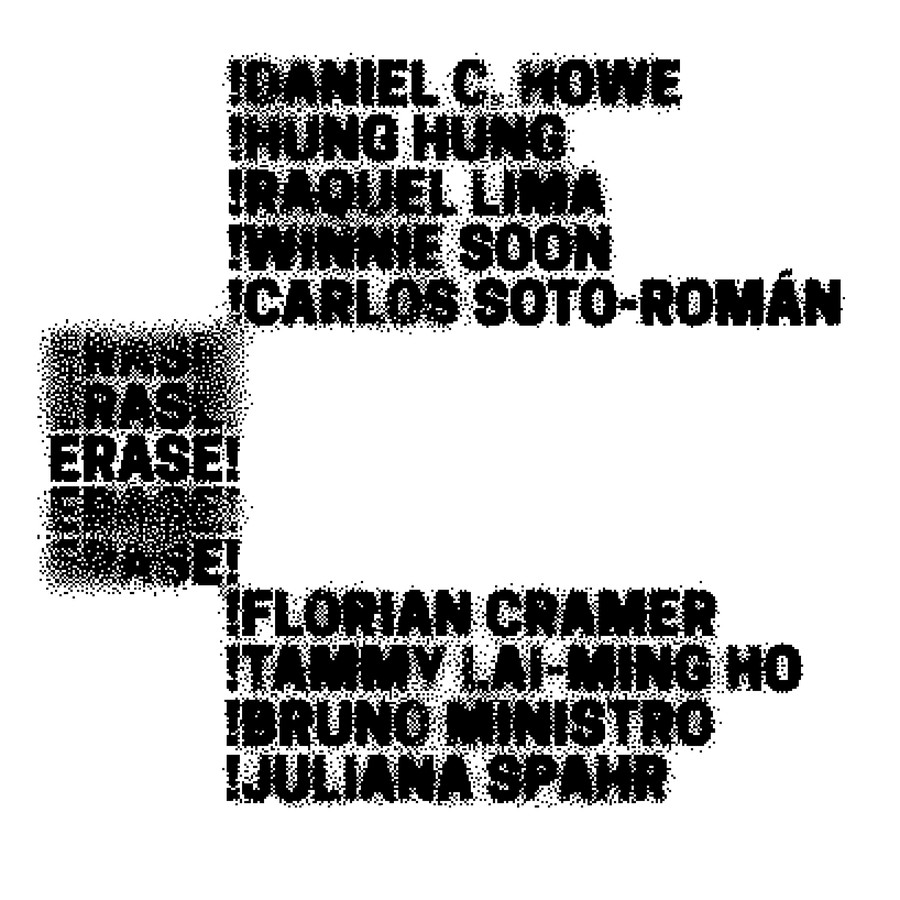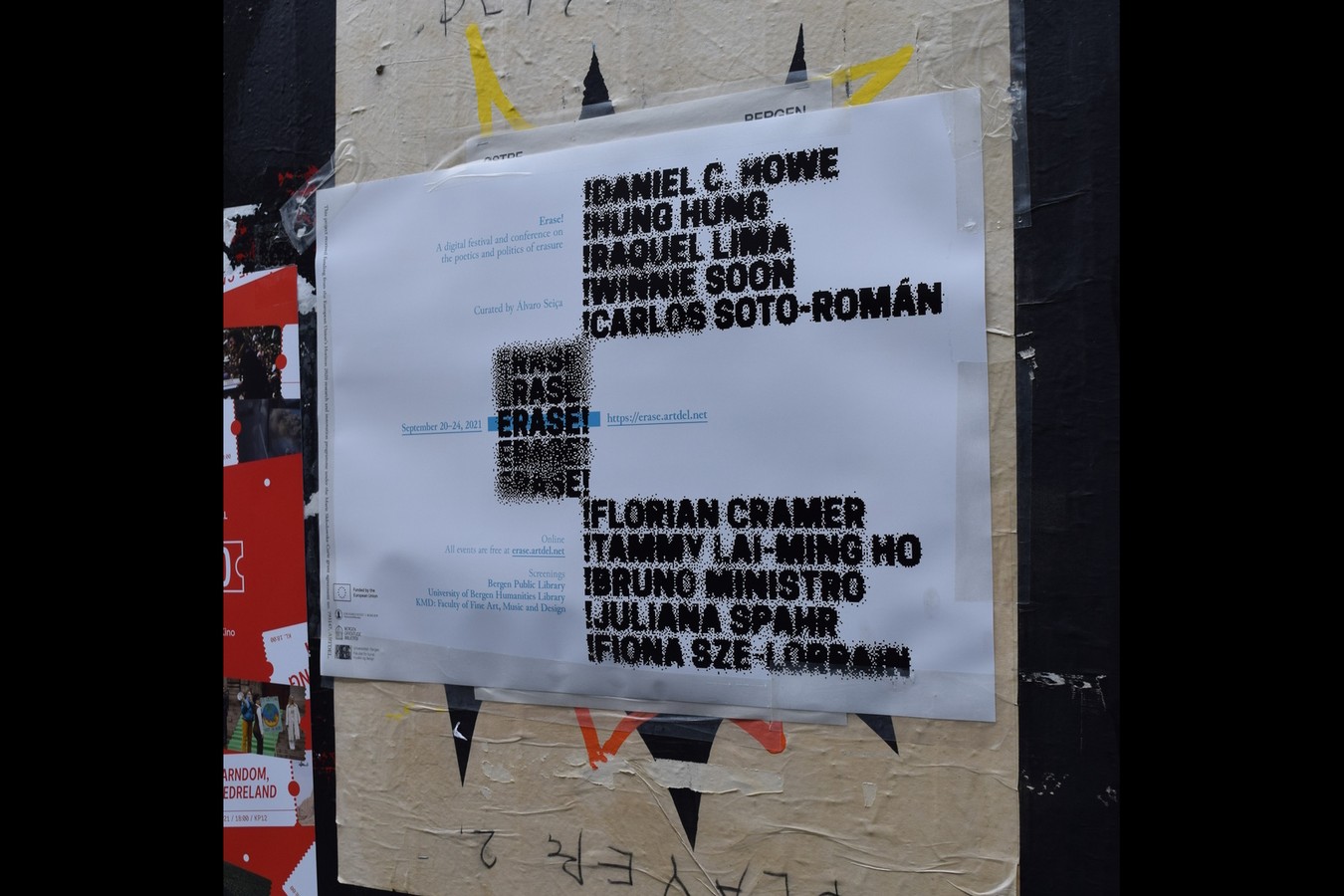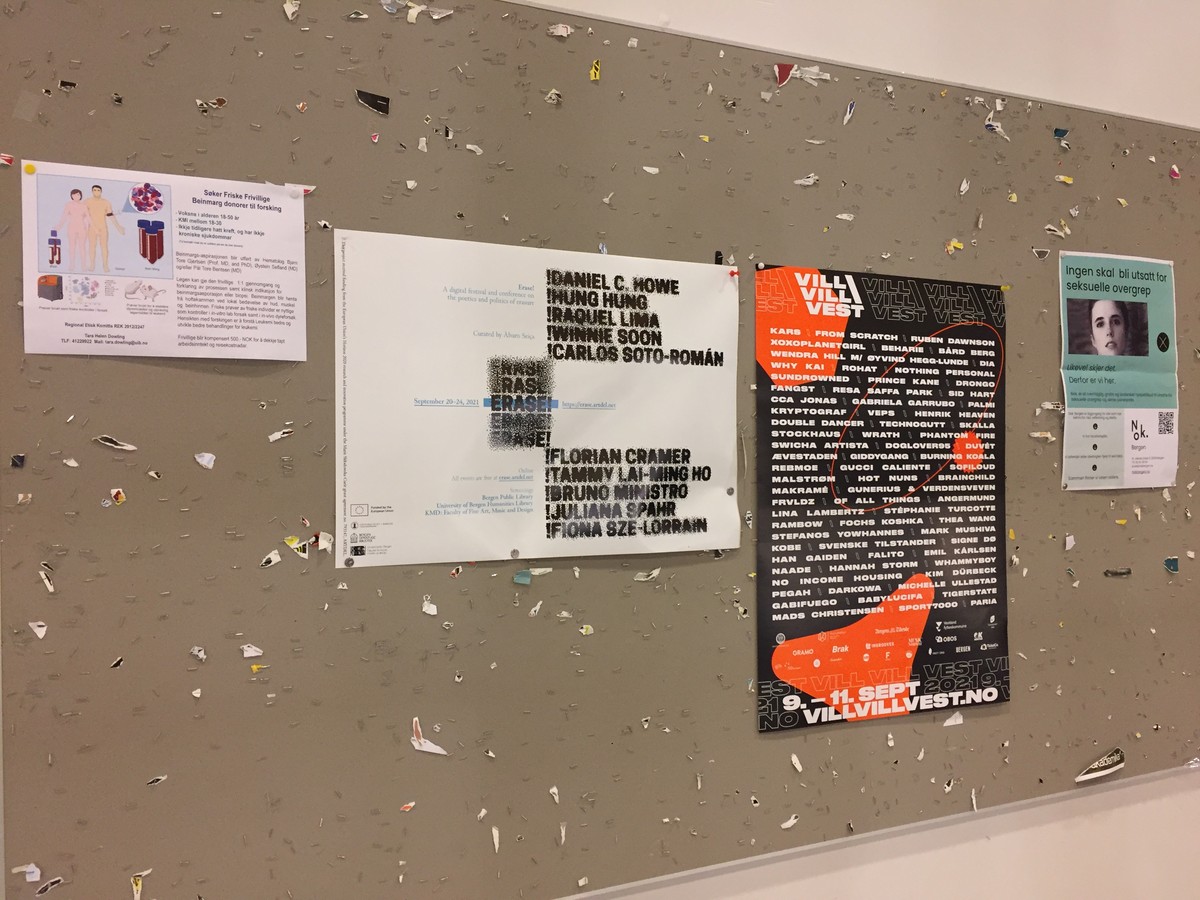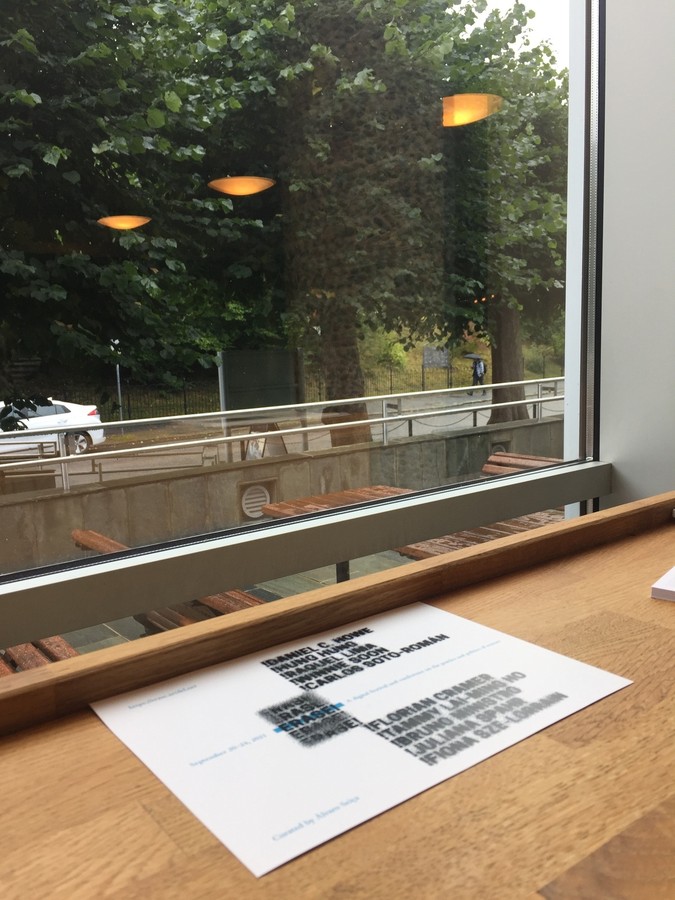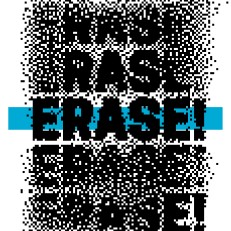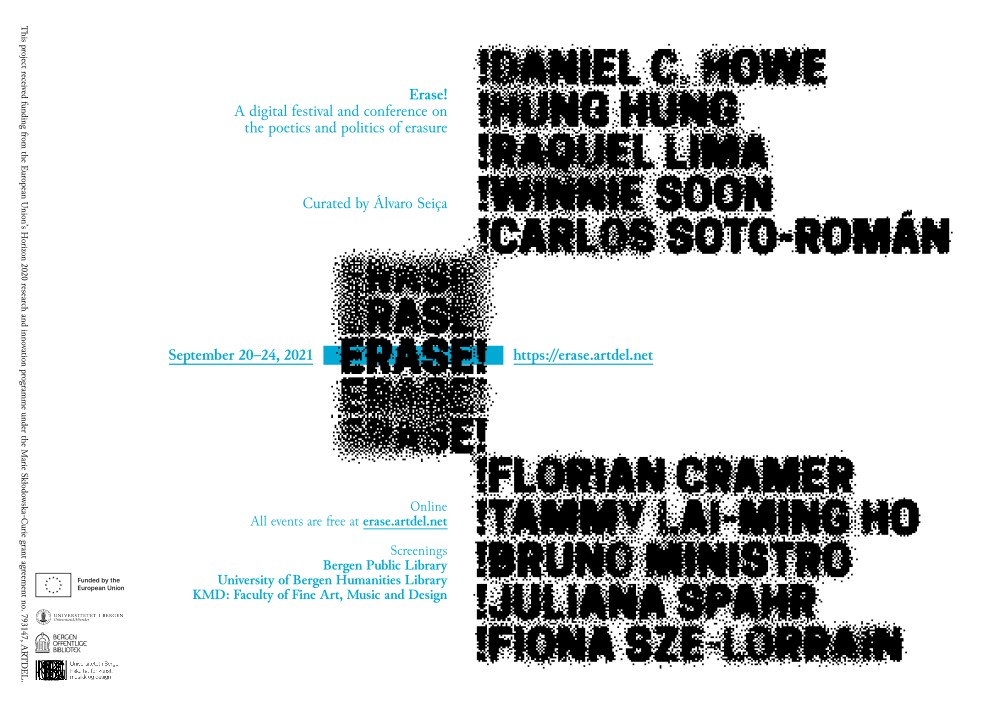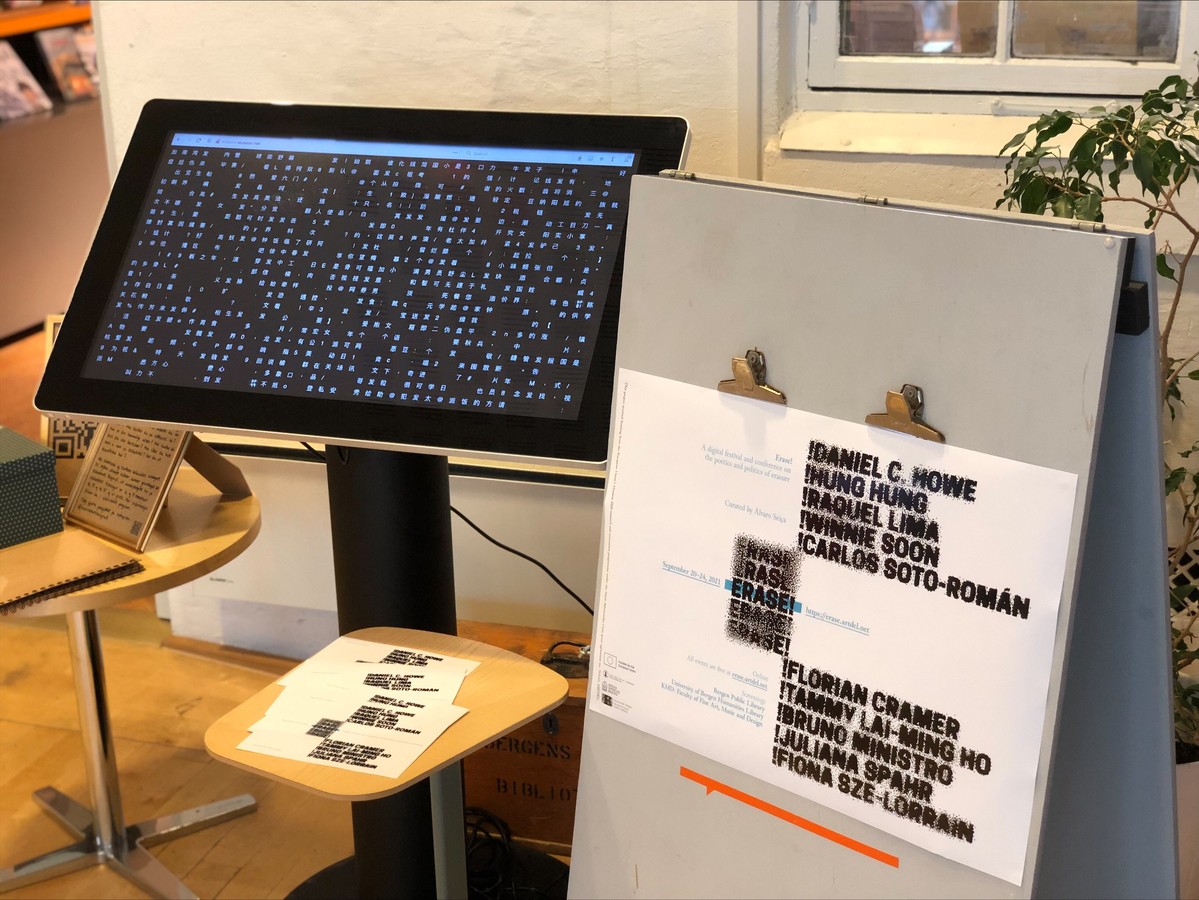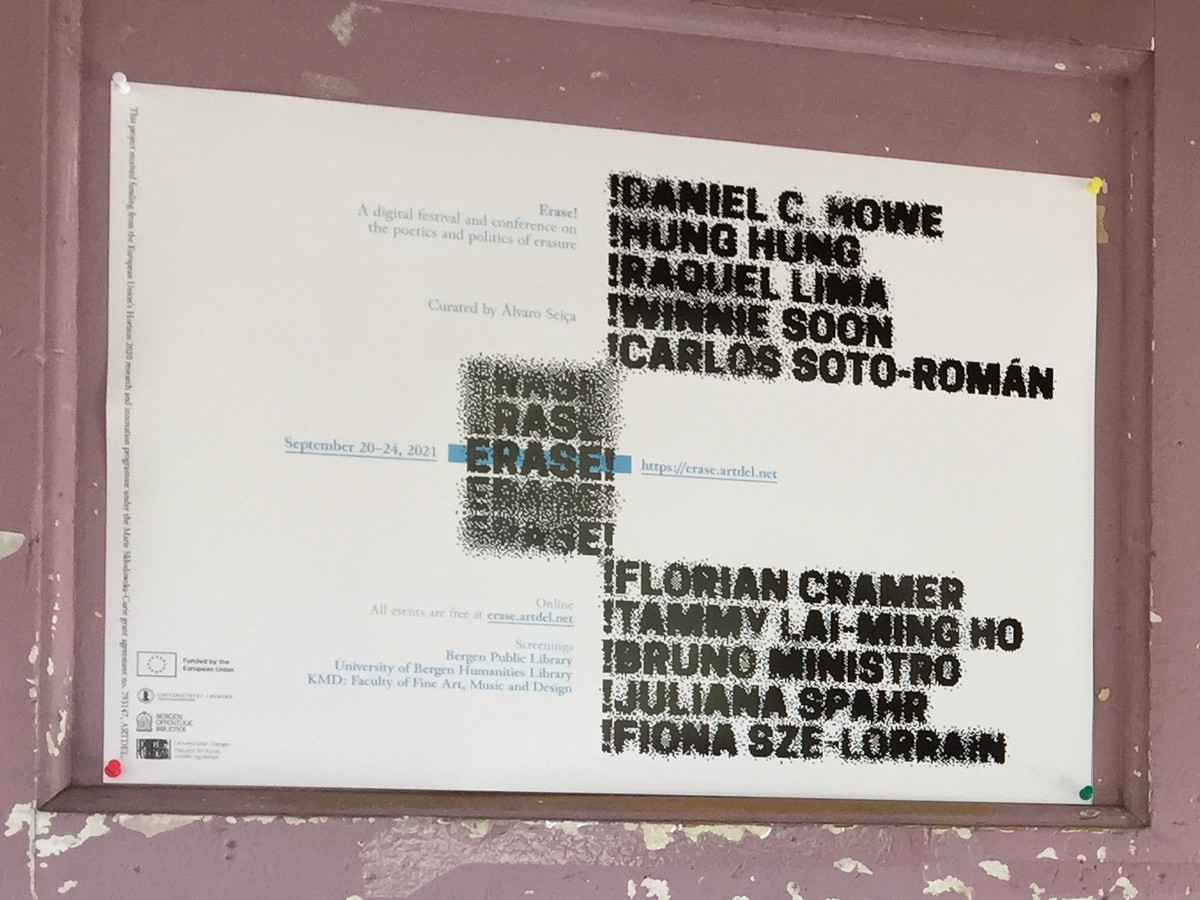In 2021 we worked with Álvaro Seiça, writer, researcher and curator, on the graphics and digital infrastructure for the Erase festival.
Approaching compression as a technique of image erasure / Compression as Loss
There are many algorithms to compress digital images by re-writing and re-ordering bits; their aim is to simplify their data representation, and thus reduce the file size. In an ideal digital world we want our files to preserve an image as faithfully/detailed as possible while also not taking up to much disk space to do so -- a central requirement since they have to be transmitted over networks.
Compression can be lossless or lossy. Lossless compression ensures that the original information can be reconstituted from the compressed version, as is the case with a text file compressed into a zip file. The original text can be algorithmically pieced together without any difference from its initial state. Lossy compression accepts a degree of degradation in order to reduce file size while reasonably preserving the integrity of the file. Images and videos are usually subject to lossy compression, as is the case with the JPEG format: the more a JPEG file is compressed, the more visible the noise introduced by compression becomes.
Compression tries to create a reasonable compromise between balancing what our eyes see and preserving an image's visual integrity. Some compression approaches take advantage of our visual limitations, exploring our own mechanisms of physical perception through visual illusions, a kind of practical trompe l'oeil. Visual artifacts to trick our eyes and please our disks/internet connections/printing machines. Compression itself has also been approached under an aesthetically exploratory angle, as is the example of "datamoshing" and excessive compression to highlight JPEG compression artifacts, which by today are already part of contemporary iconography, much in the way that the look of older monitors and TV's, or the noise of old radios, remains as a warm reminder of technological presence in our shared visual culture.
Dithering is a technically obsolete image compression technique, which is still very much in use today not so much for its space-saving potential, but rather for its retro graphic look. It came up as a way to deal with the hardware limitations in early devices that could only display a limited number of colours, or printing machines that could store large images in their memory space. By reducing the image's varying tones into a mesh of on/off dots, colours and surfaces can be simulated for our eyes, sometimes deceiving them faithfully, sometimes leaving clear visual traces of the matrix and the lost bits.
Erasure and compression share a common thread of deletion. By replacing an image with its compressed version, we're in fact omitting bits of information, leaving out parts while providing an acceptable simulacrum of the original. Meaningful signal is selectively removed, replaced by sterile noise.
The Erase! festival graphics were developed using a dithering filter, highlighting the contrast between a bold, cloudy dithered texture for the main information, and a softer crisp typographic treatment for other relevant details. The black and white-based layout recalls the most minimal of color combinations, struck through by the precise blue curves of a serif typeface. The animated versions of the festival's identity, present in each video's introduction, further highlight the balance between readability and noise.
 Manufactura Independente
Manufactura Independente
